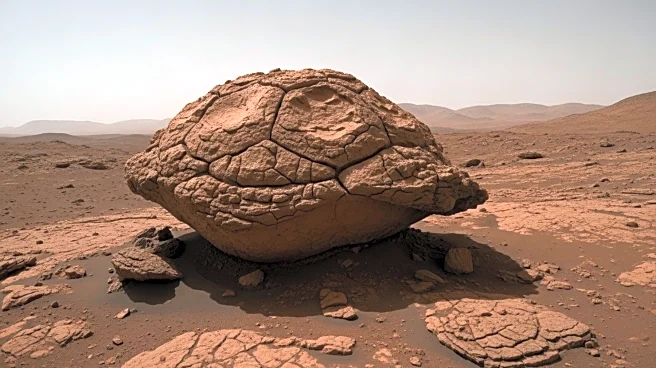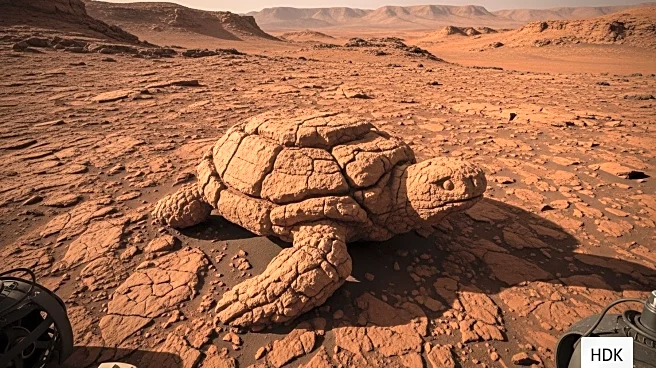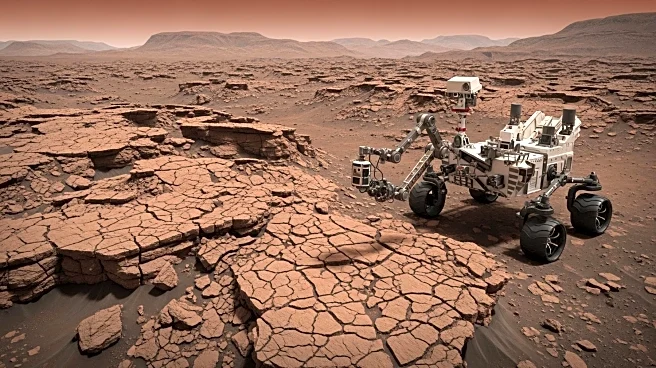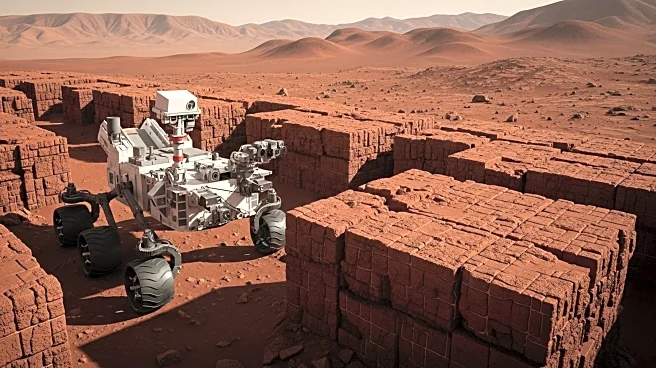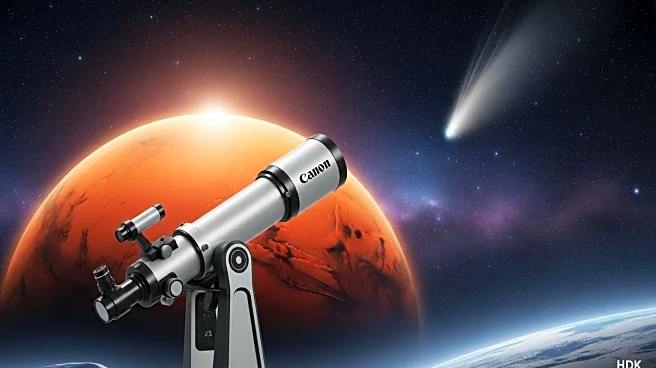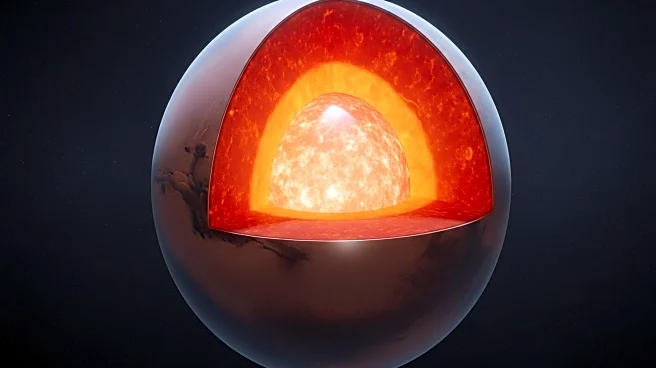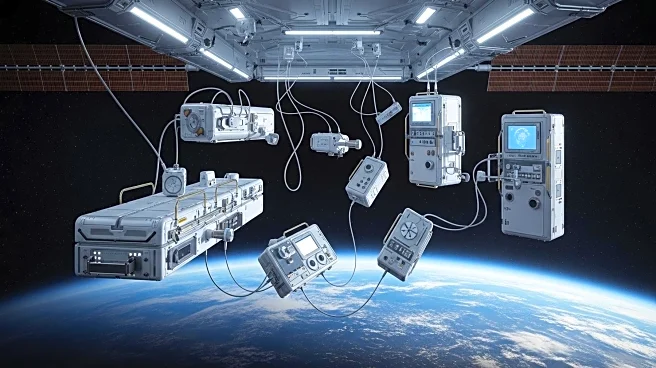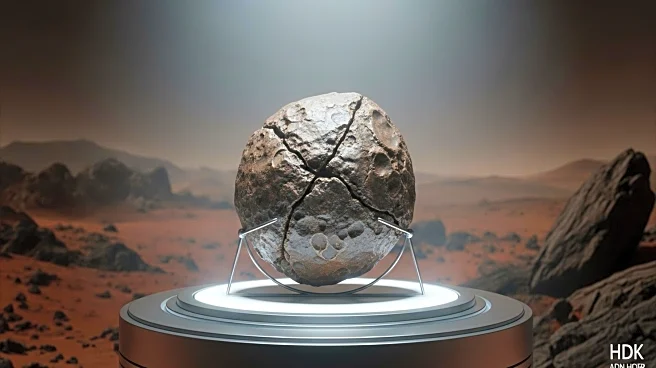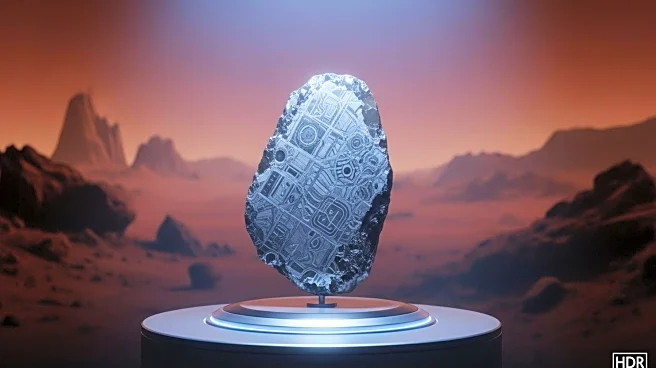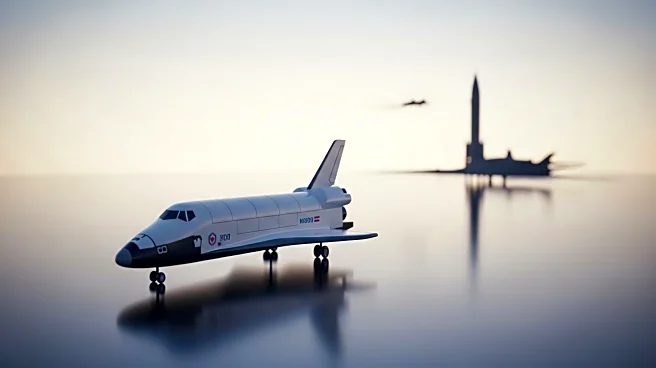What's Happening?
NASA's Perseverance Rover, exploring Jezero Crater on Mars, has photographed a rock resembling a turtle. The image, taken on August 31, showcases the rock's turtle-like features, including a 'head' and 'shell.' The rover uses advanced cameras and instruments, such as SHERLOC and WATSON, to capture high-resolution images of Martian terrain. This discovery adds to the rover's collection of intriguing geological formations, contributing to the understanding of Mars' complex geological history.
Why It's Important?
The turtle-like rock is part of Perseverance's ongoing mission to study Mars' geology and search for signs of past life. These findings help scientists understand the planet's surface composition and geological processes. The rover's ability to capture detailed images aids in identifying potential habitats for ancient microbial life, supporting future exploration and potential human missions to Mars. The discovery also fuels public interest in space exploration, highlighting the unique and unexpected features of the Martian landscape.
What's Next?
Perseverance will continue its mission, exploring Jezero Crater and analyzing rock samples. Future studies may focus on the chemical composition of these rocks to uncover more about Mars' geological history. The rover's findings will inform upcoming missions, including potential human exploration, by identifying areas of scientific interest and potential resources. NASA may also use these discoveries to refine its strategies for searching for signs of life on Mars.
Beyond the Headlines
The turtle-like rock exemplifies the pareidolia phenomenon, where humans perceive familiar shapes in random objects. This highlights the psychological aspects of space exploration and the human tendency to find patterns in unfamiliar environments. The discovery underscores the importance of advanced imaging technology in space missions, enabling detailed analysis of distant worlds.
